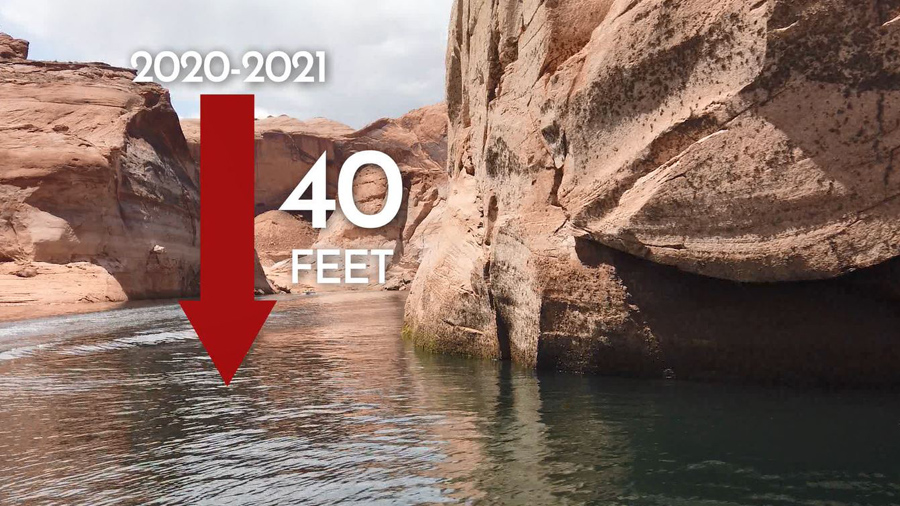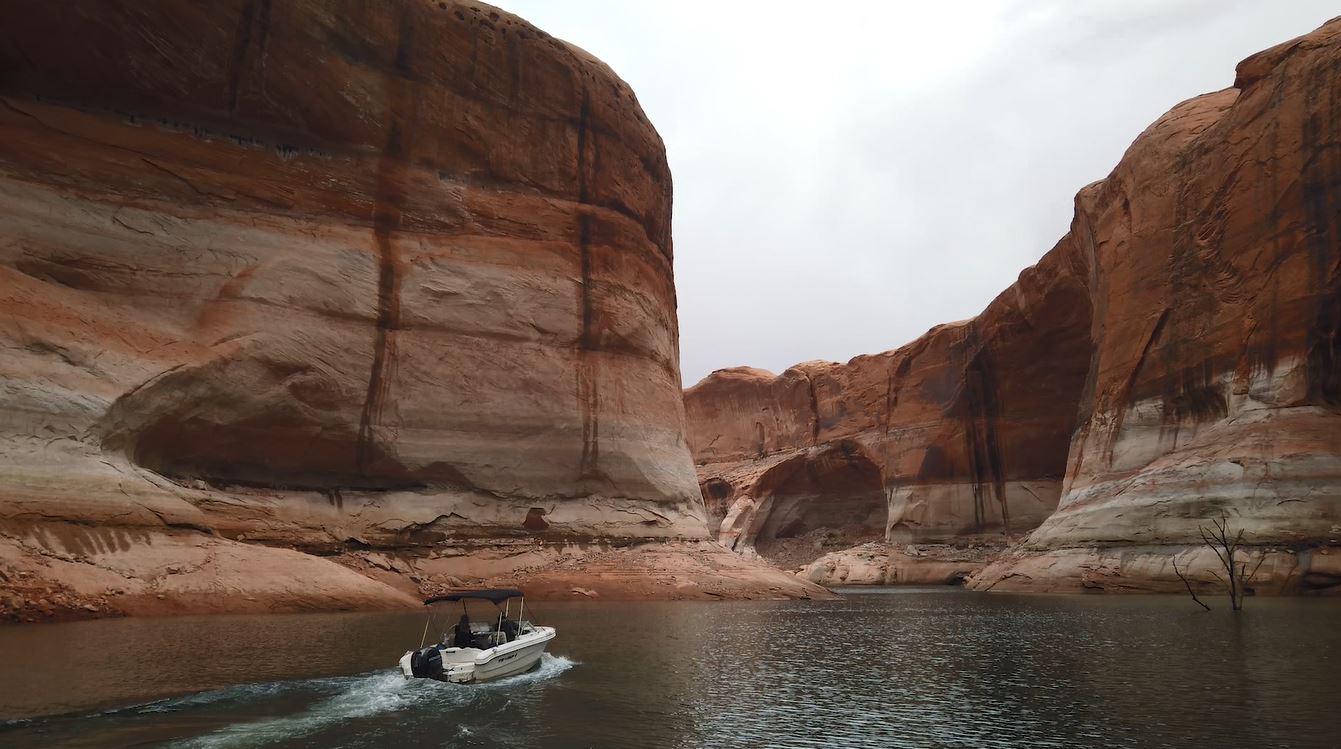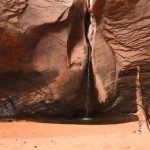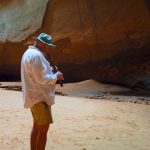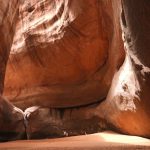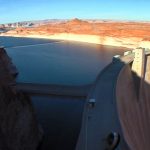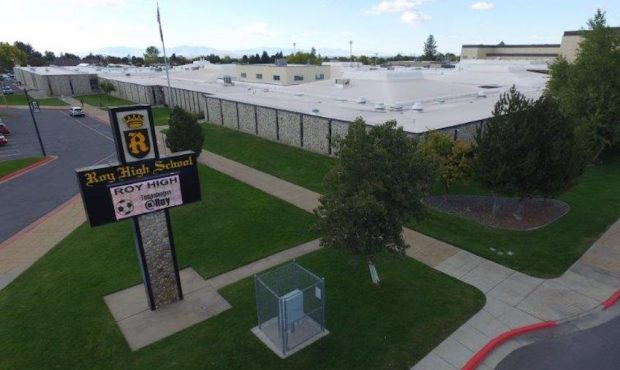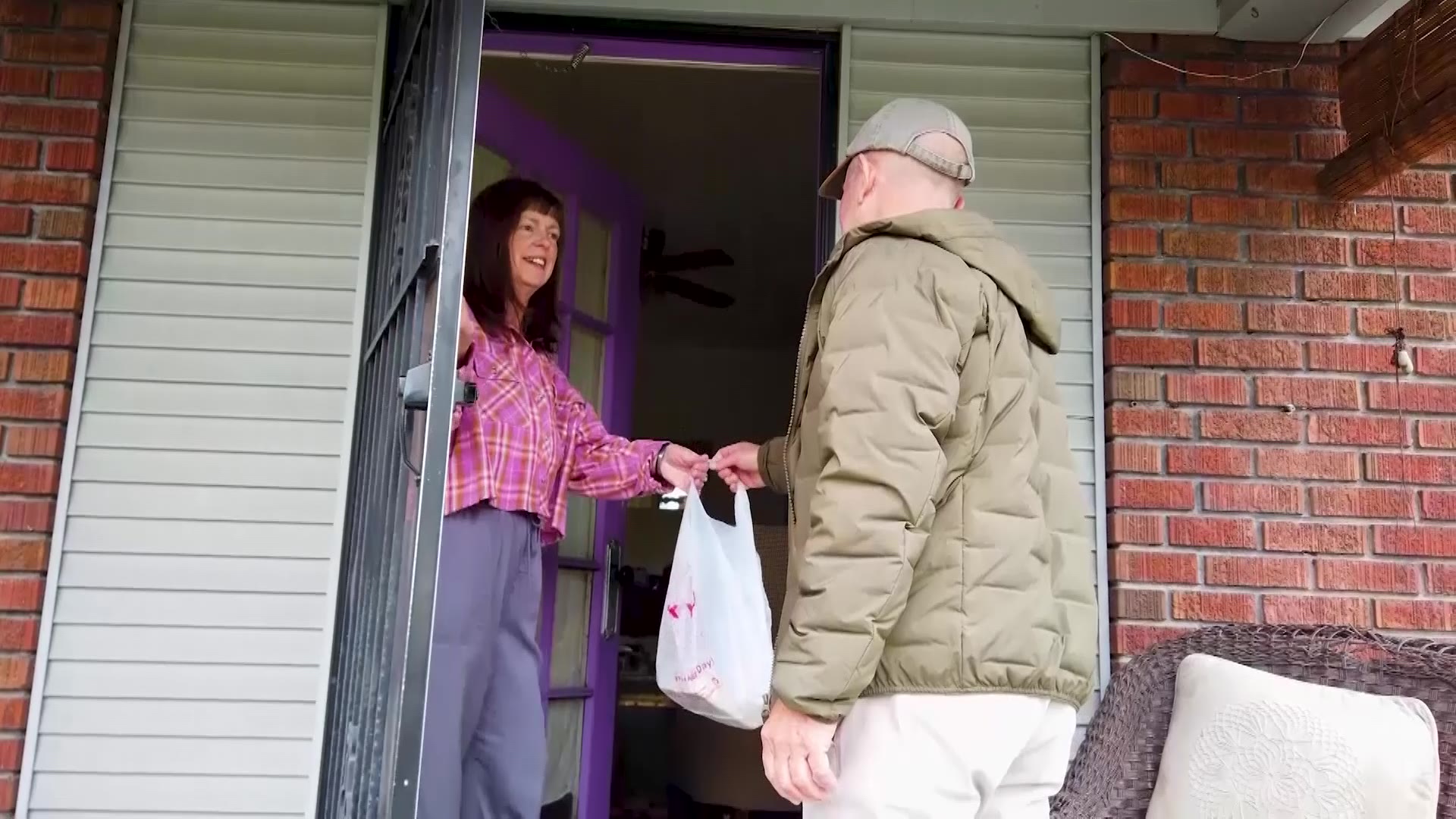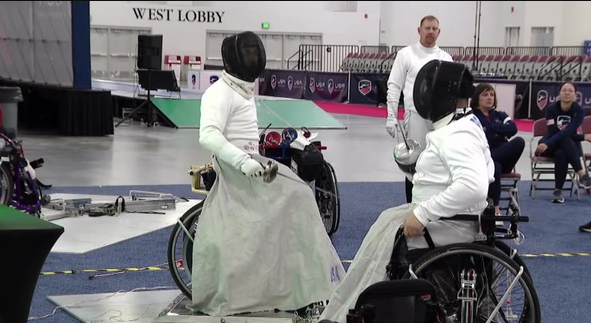Love, Hope, Worry & Fear As Lake Powell Water Levels Drop
May 25, 2021, 10:30 PM | Updated: May 26, 2021, 9:40 am
BULLFROG MARINA, Lake Powell — Normally at this time of year, Lake Powell’s water level would have risen substantially due to spring runoff. But not this year, as it continued to drop through the month of May.
The steep vertical drop is recontouring the lake, stranding launch ramps and adding to the fears of boaters — while brightening the hopes of those who would like to see the lake permanently drained.
Is Utah’s favorite boating destination in deep trouble?
Chapter 1: ‘Lake Lovers’
“We’ve been coming since 1980, 1983, so we’ve been here quite often,” said Richard Kass of Grand Junction, Colorado. He’s one of about 2 million people a year who come to Lake Powell to enjoy boating and the unmatched scenery. It’s an unnatural spectacle of sky-blue water in a red-rock desert. The dammed-up waters of the Colorado River are a shimmering man-made jewel for boaters, but there’s a lot less Lake Powell than there used to be.
“It makes you cry,” Kass said while hauling his boat out of the water at Bullfrog, the primary boating destination on Utah’s upper end of the lake.
The level of Lake Powell dropped 140 vertical feet in the last two decades — 40 feet just since last year. It’s projected to go much lower over the next year.
“We have been experiencing a fairly severe drought over the last 20 years,” said Heather Patno, hydraulic engineer for the U.S. Bureau of Reclamation, which manages the Glen Canyon Dam at the Arizona end of the lake. “It is a really dry year,” she said. “Forty-one percent of average following a 54% of average year in 2020. The lake is dropping and it’s continuing to be forecasted to drop lower.”
This year it will decline to its lowest point since the reservoir first filled a half-century ago. The unprecedented drop has left a dramatic white “bathtub ring” on the tall cliffs that confine the lake. It’s also revealed surprising things hidden for years underwater, such as an abandoned sunken boat a few miles down the lake from Bullfrog. The reservoir is now one-third full, stranding floats and buoys and leaving some shoreline facilities such as Defiance Lodge at Bullfrog far from the water’s edge. The main parking area for the Bullfrog Marina is now a half-mile from the docks.
“Two-thirds of Bullfrog Bay,” Kass said, “you can’t access it compared to what you could even last year.”
Of course, much of the lake is still hundreds of feet deep. Because so much of the coastline consists of vertical cliffs, the lake’s drop in elevation has not drastically reduced the surface area. The lake still promises boaters what the National Park Service calls “abundant recreation opportunities.”
However, the changing contours of the lake have revealed long-unseen boulders, pinnacles, and rocky ledges which create safety challenges. That’s been true nearly every year since the dam was completed in 1965. The lake has gone up and down many times, so it is always changing.
“It’s always a safety issue,” Kass said. “It’s even more so for people who think they know the lake. You have to treat it like a new lake.”
The NPS has decades of experience adjusting buoys, docks and launch ramps to the fluctuating water levels. This year is something else.
Heads up, boaters: Due to Bureau of Reclamation projections for lower water levels expected over the next several months, water access points and boat launch areas on Lake Powell will be impacted. Check https://t.co/g8Urkn3CXi for closures. pic.twitter.com/nELBuH1R3F
— UtahDWR (@UtahDWR) May 25, 2021
Almost two decades ago, the lowering lake left the launch ramp at Hite. It’s been abandoned ever since. This year it’s already put two more ramps out of business. That’s a big problem on a nearly 200-mile-long lake, which — because of the wild and rugged surrounding landscape — has limited access only in small areas at each end of the lake.
The Antelope Point and Stateline launch ramps were closed this year, leaving only one public ramp at the Arizona end of the Lake. One other ramp there is a private business that the public can use if they pay a “valet fee.”
At the Utah end, the Halls Crossing ramp, and an unpaved “launch at your own risk” access point are still usable near Hite. The Bullfrog Main ramp is closed. Instead, boaters are temporarily using the Bullfrog North ramp. It’s normally used for servicing houseboats and now must be shared by the Lake Powell Ferry and hundreds or thousands of people arriving at the lake with boats on trailers.
“It’s not too much of a hassle,” said Esteban Hernandez, of Eagle Mountain, as he maneuvered his boat at the end of the ramp.
Bullfrog North is much narrower than the Bullfrog Main ramp that long-time boaters are accustomed to.
“Seven boats at a time; this is down to two,” Kass said after pulling his boat out of the water. “So, it’s a whole different ballgame right now.”
“Plan ahead” for congestion, the NPS said, especially Memorial Day weekend.
Up-to-date boating alerts are available at the NPS website here.
For Lake Powell lovers, though, there’s still a lot of lake and plenty to love.
“There’s just less water,” Kass said. “There’s a lot more beaches, and the fishing’s been really good.”
“It’s pretty much the same old lake,” Hernandez said. His family has enjoyed boating on the lake for several years. They acknowledge the lake level is going lower and may stay that way for a long time to come.
“Which is not that bad,” Leslie Hernandez said, “but I don’t think it’s going to be the same until a few years (from now).”
Chapter 2: ‘Dam Detractors’
“Society is going to have to deal with just how stupid it was to build that dam,” Dr. Ingebretsen said.
On a recent weekend in May, he led a group of boaters who were delighted to find an enormous slab of rock rising from the water. It’s the long-submerged Gregory Natural Bridge, one of the world’s largest, emerging after decades underwater.
“We’re still quite a ways from being able to walk under it, but that day will come,” Ingebretsen said. “This beautiful arch will be restored. We’ll be able to see it next year.”
Ingebretsen is the founder of the Glen Canyon Institute, which has campaigned for the draining of Lake Powell for a quarter-century.
He led two boatloads of like-minded environmentalists up a side canyon of Lake Powell’s “Escalante Arm,” where they were able to beach their boats inside one of their revered destinations. It’s known as the “Cathedral in the Desert,” a natural feature that was swallowed up by rising water several decades ago.
This was probably the most idyllic place in all of Glen Canyon,” Ingebretsen said, admiring the huge natural grotto, complete with a sun-speckled waterfall that was hidden from view for so long.
“Oh, it’s beautiful,” he said. “It’s spectacular. You come into a place like this and you’re awed at the nature of Glen Canyon. It’s hard to imagine that this has been underwater for all those years.
“I mean, seeing ‘Cathedral in the Desert’ come out of the water, it just really moves you,” said Eric Balken, executive director of the Glen Canyon Institute. “You can’t help but be taken by this place.”
Before the dam was built, only hikers and river-runners ever visited the natural cathedral. Frank Culver never thought he’d get a chance to see it. But he visited it in 2014 and saw that much of it was visible after years of drought. Pointing back to a bend in the lake, Culver said, “When we rounded that corner there, I just burst into tears. I mean it was an emotional moment.”
At the base of the waterfall, Culver pulled out a hand-made wooden flute and played a four-minute improvisation that echoed around the huge grotto.
“There just aren’t other places like this,” he said after finishing his brief concert. “I mean, how do you beat something like this?”
The grotto still isn’t what it once was. Over the last 50 years, Lake Powell deposited at least 20 to 30 feet of sediment on the floor of the “cathedral.” Ingebretsen believes natural erosion will restore it if the lake keeps going down.
“Just the flow of water will gut this all out,” Ingebretsen predicted. “The future course of this whole area is restoration. and it will restore very quickly.”
Chapter 3: ‘Water Worries’
“The reservoirs are doing what they were intended to do, what they have been intended to do,” said Heather Patno, who spoke for the Bureau of Reclamation. Without Glen Canyon Dam, she said, the last 20 years of drought would have taken a huge toll.
“Today,” she said, “there would be no water left to distribute to the 40 million people who depend on the Colorado River.”
Things are bad enough that the three lower basin states — California, Nevada and Arizona — will likely be forced to make an official declaration of a water shortage, committing them to tough conservation measures. “The states in the lower basin will have to take less water,” Patno said. “They do have a plan for dealing with that.”
Nearly 100 years ago, water experts and politicians in seven states — the upper basin states are Utah, New Mexico, Colorado and Wyoming — worked with Congress to legally divide the waters of the Colorado River. But estimates at that time proved faulty.
“There’s a lot less water than what was put into the legislative documents,” Patno said. “We have really been reliant on some of the above-average water years.”
The Glen Canyon Dam is used as an “accounting system” of sorts. It’s used to release to the three lower-basin states their legally mandated share of the water that mostly comes from precipitation in the four upper-basin states. The dam also generates large amounts of electricity, a function that would become impossible if Lake Powell’s surface elevation drops too far.
“The elevation at which we lose hydro-power generation at Powell is 3,490 feet (above sea level),” Patno said. “We are 73 feet above that right now. So it’s unlikely we’re going to hit that point this year.”
What about future years? Many scientists say global warming means the region will get even dryer in the future. Patno isn’t convinced.
“As you’re looking at climate change scenarios into the future,” she said, “some of those are wetter. So, we would be managing not only for extreme drought but for extreme flooding as well.”
Chapter 4: ‘Future Fears’
“You have to see the positives, right?” Leslie Hernandez asked rhetorically as she stood with her family on a dock at Bullfrog. “You can still be on the water. You still have the canyons to look at. So, I’m sure there’s good things.”
Some Lake Powell boaters are worried that the 20-year drought might be a hint of the new normal.
“It’s very alarming, and I think there’s more concern next year,” said Kass. This year he noticed, for the first time, a giant boulder that emerged from the lake near the buoy where he ties up his houseboat. “Next spring would be, it would be really bad if we didn’t get the snowpack that we’re hoping for,” he said.
The boating facilities have been moved up and down many times over the years. The NPS said it’s constantly assessing the situation and studying alternatives for continued boat access.
Supporters of the “Drain Lake Powell” movement believe nature is doing what they have long predicted and advocated.
“It’s going to be hard to keep Bullfrog Marina open,” Balken said. “It’s just logistically going to be near impossible.”
Kass thinks some boaters will always find a place where they can back their trailer into the lake. “So, I think small boats are OK,” he said. “But larger boats could get very dicey.”
The NPS refused repeated requests for interviews and so did Aramark, the company that operates the lake’s marinas and boat rentals. They’ve given no specific information about how low the boating facilities can safely be lowered and what kinds of alternatives are under consideration.
“We are currently exploring temporary solutions,” the NPS said in a written statement. “We do not currently anticipate any long-term closures of facilities … The park will do its best to minimize the disruptions in service.”
“The water is still great,” Esteban Hernandez said, standing in his speedboat at Bullfrog. “The water’s still warm. It’s the most beautiful lake ever to visit. So, there you have it.”
The worry and fear, the love and hope, are only heightened by the government’s current forecast: The lake will “most probably” drop another 35 feet by next spring, straight down.

